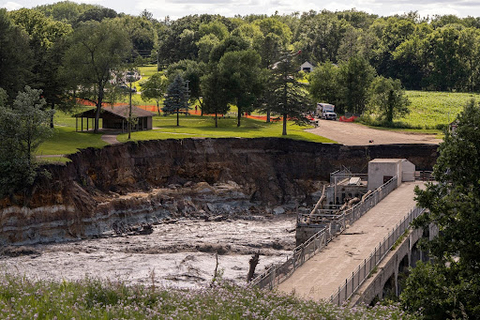Floods and droughts are becoming more common and more severe in Minnesota as our climate warms, posing significant challenges across a variety of sectors and industries.
This year, the University of Minnesota Climate Adaptation Partnership (MCAP) made available detailed future climate data for communities across the state — allowing users to view projections for variables like precipitation and snow cover at a 2.5-mile scale.
Now, in partnership with Great River Greening, the 1854 Treaty Authority, and the National Integrated Drought Information System, MCAP is taking the project one step further — conducting additional analysis to allow communities to move from understanding their climate risk to planning and implementing the necessary changes to adapt.
The new analysis will help planners and engineers integrate future climate data into the types of models they use for long-term planning and decision-making. It will produce publicly available information about how extreme precipitation and drought events may impact soil moisture, lake levels, and streamflows.
“We see this as a critical step toward climate resilience across the state,” said Nate Meyer, MCAP interim director. “It is essential that we can plan and prepare not only for increased intensity and frequency of heavy precipitation and the rapid onset of drought but also for moving more frequently between these wet and dry extremes.”
MCAP — a joint program of University of Minnesota Extension and the College of Food, Agricultural and Natural Resource Sciences — will consult directly with communities, practitioners, and rights holders throughout the project. Staff will also develop resources to inform planning by state, local, and Tribal governments; water and natural resource managers; and agricultural producers, among others.
“The last two summers provide a clear case study of how swiftly drought and flooding can impact our shared lives, land, and watersheds,” said Brennan Blue, environmental stewardship director of Great River Greening. “Tools like the newly released MN CliMAT support both the public and professionals in better understanding the effects of shifting weather patterns throughout our state. We’re grateful to help introduce this powerful, practical tool to a range of stakeholders and rights holders throughout Minnesota.”
The project is funded by the Minnesota Environment and Natural Resources Trust Fund.
Permission is granted to news media to republish our news articles with credit to University of Minnesota Extension. Images also may be republished; please check for specific photographer credits or limited use restrictions in the photo title.


